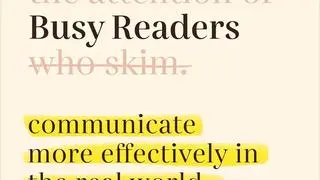Indian cities have a tumultuous relationship with water. News about floods in the rainy season and scarcity in summer is the norm across cities. Shades of Blue: Connecting the drops in India’s Cities deals with the past, present and future of water bodies in India.
The authors, Harini Nagendra and Seema Mundoli, tell the story of India’s water bodies in different ways. They write about the special significance water has in Indian culture by telling tales of kings, saints and beloved songs. They explain how water bodies shaped and transformed our cities from tiny villages to the megapolises we know.
In the preface, the authors say that they wanted to offer the readers a “fun book” which can provide knowledge and inspire. And, they delivered on that promise. A book on water management could be rather dry, no pun intended. This book sticks to the topic, but it is never boring.
The authors’ writing style is breezy, yet the book is packed with information, from creatures that call water bodies their home to infrastructural issues that plague our cities. The book is also peppered with poignant illustrations and insightful factoids.
Ground realities
It is no secret that the quality of water in our cities is poor, contaminated by garbage, sewage, and industrial waste. This is the central theme of the book. The authors state the reality as it is. They do a commendable job in describing each issue in great detail. For example, they dedicate a chapter to animals that live in the water. They explain how endangered animals like the Gangetic river dolphins live in precarious situations. They also write about various kinds of water pollution and the initiatives several governments across India planned to restore the rivers in their States. But these plans haven’t made a big impact as most rivers are still polluted.
The authors’ way of presenting issues at hand is engaging. For example, they introduce a chapter on the threat of super bugs by reminding us that Alexander Fleming, who discovered antibiotics, warned about the dangers of antibiotic resistance in 1945. They go on to note that India is a pharmaceutical hub that makes antibiotics for the world, but many factories dump their untreated effluent into nearby water bodies.
The authors also write about policy matters, including long-standing dreams like interlinking rivers. They write about the potential benefits and problems that can arise out of the scheme.
The book details how we took water bodies for granted while planning our cities. The issues faced by big cities like New Delhi, Mumbai, Chennai and Kolkata grab national headlines, and the book covers them in great detail. The authors have done a commendable job in covering issues faced in smaller cities such as Udaipur, Guwahati and Lakshadweep.
The common thread across cities is that somewhere along the way rivers, lakes, ponds and other water bodies were ignored (perhaps even wilfully) and their condition deteriorated because of botched up planning. This book is a chilling reminder of what will happen when we take our water bodies for granted.
The authors describe the current situation in detail, and how we got here. They also caution us that these issues will only get more complicated as the impact of climate change gets more severe.
Despite the gloom, the authors end the book on a positive note, hoping that they have inspired the reader to take up the cause of water protection and participate in activities like trash collection and lake restoration. They advocate for a shift in mindset — water is a shared responsibility and not just a public good.
The book is replete with examples of how we used, then abused our water bodies. One hopes that we learn our lessons and start the recovery process before it is too late.
Title: Shades of Blue: Connecting the drops in India’s Cities
Authors: Harini Nagendra and Seema Mundoli
Pages: 304
Price: Rs 499
Published: Penguin Viking








Comments
Comments have to be in English, and in full sentences. They cannot be abusive or personal. Please abide by our community guidelines for posting your comments.
We have migrated to a new commenting platform. If you are already a registered user of TheHindu Businessline and logged in, you may continue to engage with our articles. If you do not have an account please register and login to post comments. Users can access their older comments by logging into their accounts on Vuukle.